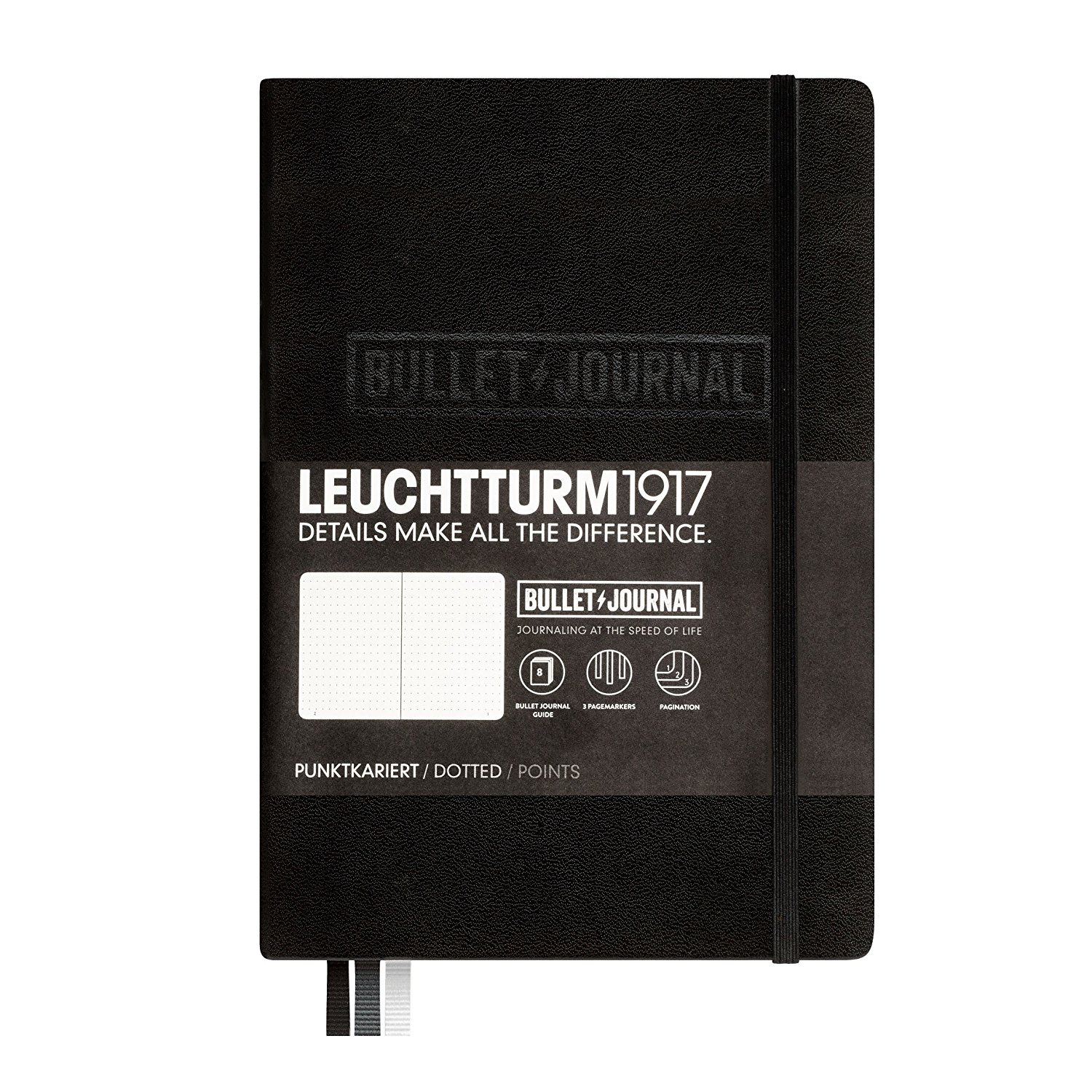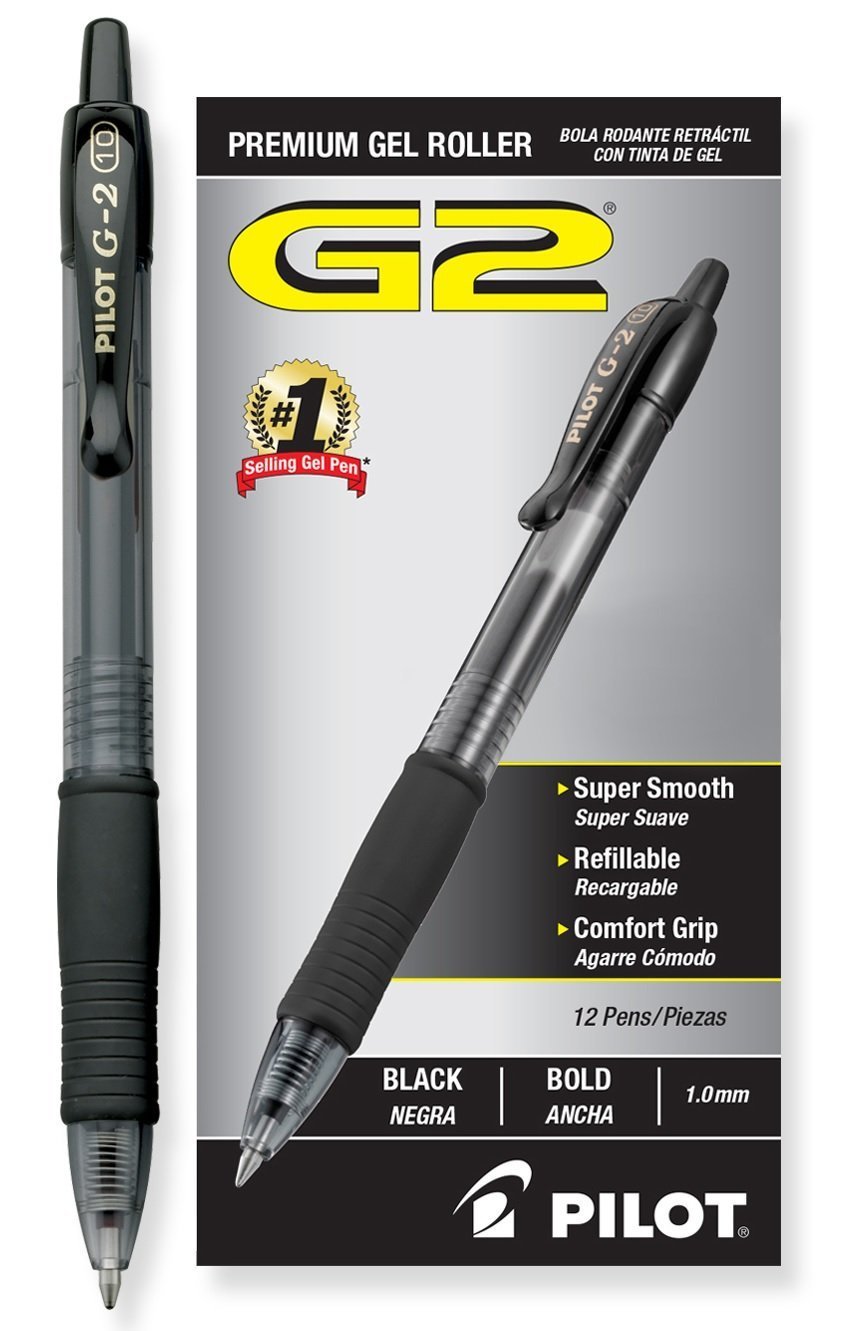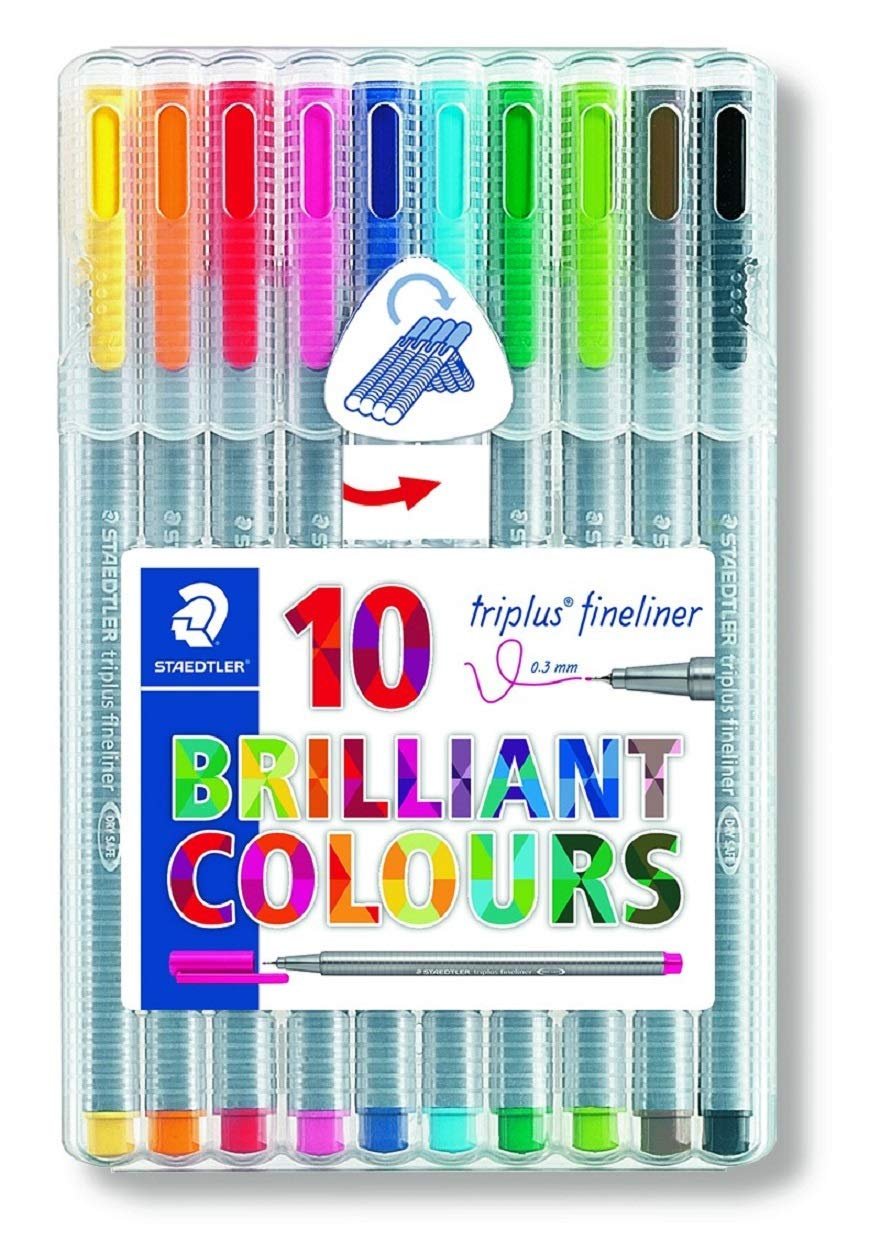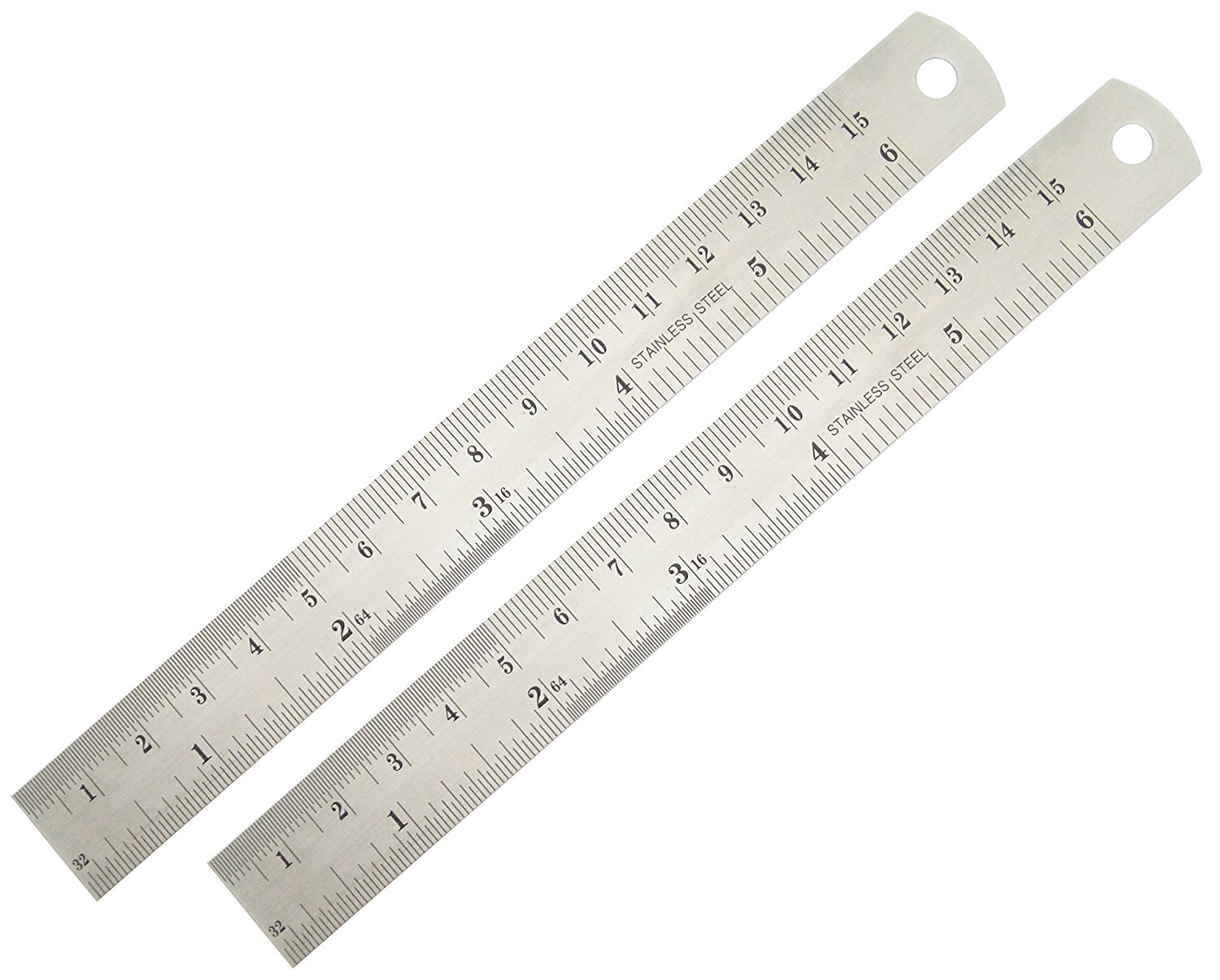Show notes
If you’ve ever wanted to learn about Bullet Journaling, then this episode is for you! We’ll cover both the original method and my slimmed-down version.
Plus I have a list of all of the products I use, and links for you to grab them for yourself!
Table of Contents
SIDE NOTE: Analog vs. Digital [01:19]
Overall, I tend to prefer analog (paper/pen) task tracking methods. Digital tools aren’t quite quick enough for me, so I find that I revert to analog pretty often.
Some digital tools I do like though:
- Trello
- Todoist
- Asana
MAIN IDEA: How to Start a Bullet Journal [04:12]
What is Bullet Journaling? [04:12]
According to Leuchtturm1917, the company who manufactures official Bullet Journals, a Bullet Journal is “a totally customizable {and totally forgiving) organization system that adapts to your needs.”
Here’s a quick overview of the original system:
Bullets
- Dot = task
- X = Completed task
- > = Migrated task
- Horizontal line = Note
- Circle = Event
Spreads
- A spread is a pair of facing pages
Modules
Descriptions courtesy of bulletjournal.com
- The Index: The first few pages of this book are your Index. The Index is where the Bullet Journal really comes together. As you start to use your book, simply add the topics of your Collections and their page numbers to the Index, so you can quickly find and reference them at any point.
- The Future Log: This Collection is used to store items that either need to be scheduled months in advance… or things that you want to get around to someday.
- The Monthly Log: The Monthly Log helps you organize – you guessed it – your month. It consists of a calendar and a task list.
- The Daily Log: The Daily Log is designed for day-to-day use. At the top of the page, record the date as your topic. Throughout the course of the day, simply Rapid Log your Tasks, Events, and Notes as they occur.
More info
If you want more info on the original system, head over to bulletjournal.com.
You can also just watch this quick clip from that site to get the gist!
My system: BuJo Lite [08:37]
I call my system BuJoLite because I do a slimmed-down version of the system. I leave out most of the fancy logs, the index, and things like that.
Instead, I focus on a simple note/task system.
Also, in case you didn’t catch it, BuJo is short for Bullet Journal!
My bullets
Here are the bullets I use:
- [] = Task
- [/] = Task in progress
- [] + diagonal lines = Completed tasks
- [>] = Migrated
- Dot = note
- Horizontal line = subnote
- * = Important
- 0X = Deadline (Get it!? It looks like a skull & crossbones)
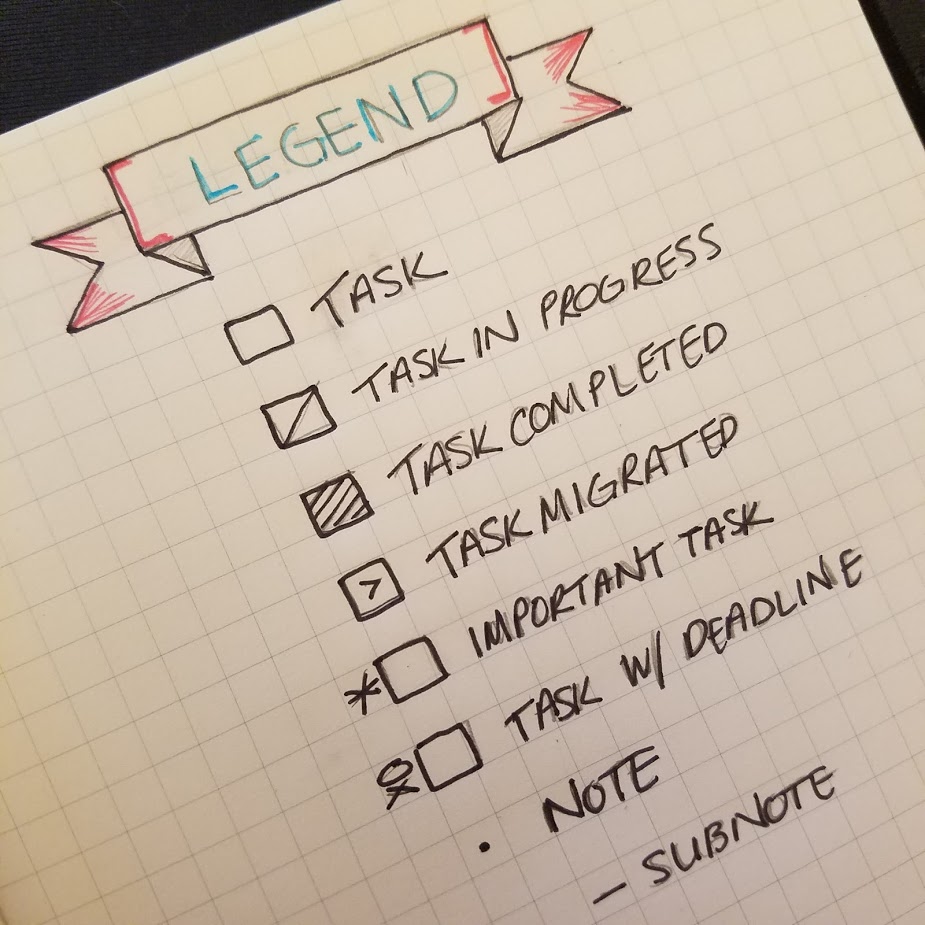
My method
- Backlog
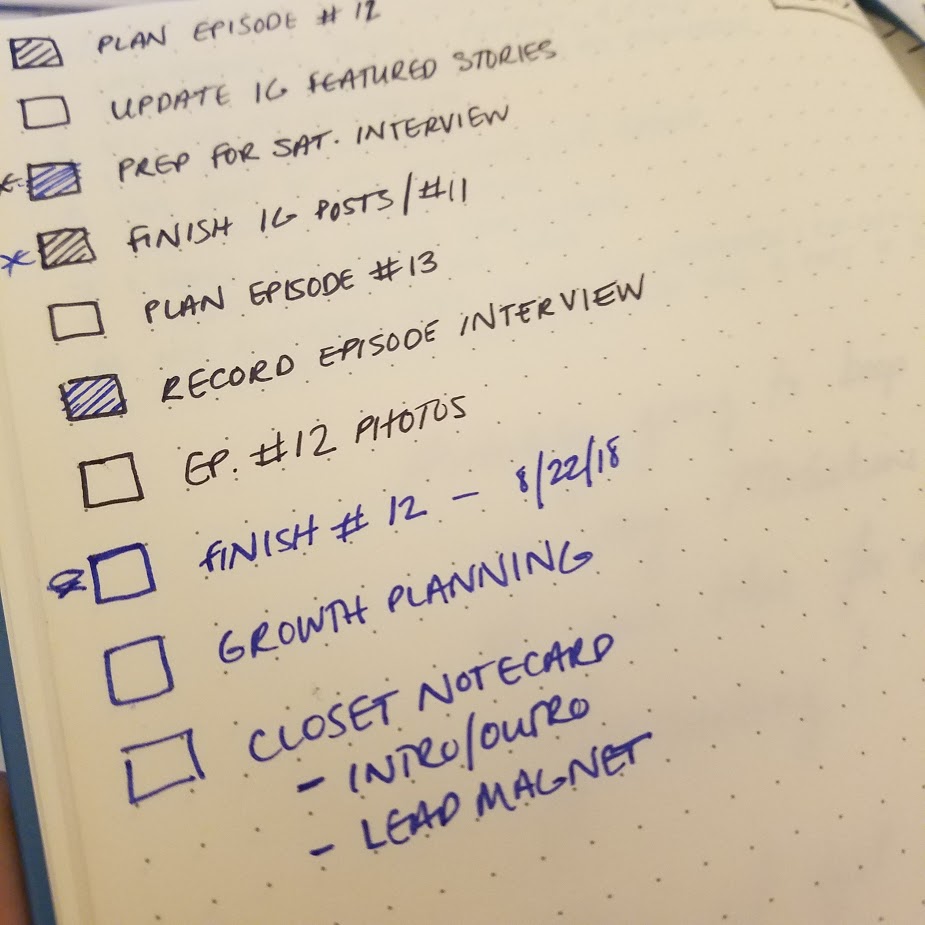
- This term is borrowed from the Scrum method. If you’ve never heard of it, it’s an awesome project management method. You can grab the book by clicking here.
- I use a backlog instead of a weekly log. I find that tasks don’t usually fit neatly into a single week. So, instead, I use one spread for my backlog until it’s full. Then, I migrate any incomplete tasks to a new spread and keep going from there!
- I find that this is much more flexible.
- Daily Log

- I begin each day with the date.
- Then, I select a maximum of 3 tasks from the backlog. These tasks are my intentions for the day. I copy them underneath the date, with a box next to each to signify that they’re tasks.
- Underneath those tasks, I draw a dashed line. This helps separate my intentions from the rest of the day.
- I use the rest of the room for notes, thoughts, and tasks that come up throughout the day.
- Note that I don’t write tasks that come up throughout the day in my backlog. This is because I don’t want to have to take time to think about switching back and forth between pages. They all stay in my daily log until the beginning of the next day.
- That brings us to…
- The beginning of each day
- First, I migrate any incomplete tasks from the previous day to the backlog.
- Then, I update the backlog with any completed / started tasks.
- Next, I flip back to my Daily Log and draw a solid line underneath the last note / task (in the photo, I actually was drawing two solid lines — either way works). This signifies the end of the previous day.
- Finally, I write the date on the next line and begin the daily log again!
PRODUCT RECOMMENDATION: Bullet Journal supplies [17:45]
Moleskine Squared Notebook (soft cover)

For me, this is the ultimate notebook in terms of feel.
There’s just something special about the way this particular notebook feels. It feels simple, yet luxurious. It feels professional, yet casual.
This is a phenomenal notebook that should 100% be your first choice!
Click here to get a Moleskine notebook.
Leuchtturm1917 Bullet Journal Notebook
First things first: How the hell do you pronounce “Leuchtturm”? Take 20 seconds to watch this quick clip:
I just got one of these for my birthday a few days ago! Kevin got it for me because office supplies are the perfect birthday gift ❤️??️
I haven’t spent much time with this notebook yet, but here are a few things I love about it:
- It has 3 bookmark ribbons
- Its pages are already numbered
- It’s got an index already ready for you
- It’s got bullet journal instructions printed in the back
If you want to go all-in on a serious bullet journal, try one of these!
Click here to get a Leuchtturm1917 Bullet Journal notebook.
Pilot G2 Pens
As I talked about all the way back in episode #1, Pilot G2s are some really awesome pens. Head back there to find out why!
Click here to jump to episode #1
Trust me, you can’t go wrong with these pens.
Click here to get some Pilot G2 pens.
Staedtler Triplus Fineliner Pens
Lately though, I’ve switched off the Pilot G2s in favor of Staedtler Triplus Fineliners!
I was sitting in an interview at my office and the candidate took notes with a Moleskine notebook and a Staedtler pen. Needless to say, I liked her from the get-go!
I have used Staedtler pens for writing out my morning goals and habits, but I never thought to use them for regular notes at work.
Since that day though, I switched to using these pens full time, and I really like it!
Pros
- The pens write very nicely
- They’re actually very thin markers, so they never skip
- They’re really slim, so they can easily tuck into spiral-bound notebooks
- Pens this thin allow you to write small
- Although they have a cap, the clip on the cap is very sturdy
- They come in an awesome container that flips around into a stand!
- The colors are great (although I find that I stick mostly to black and blue at work)
- They’re affordable! A 10-pack on Amazon is only about $10!
Cons
- They have a detachable cap
- When you draw lines quickly, they fade a tiny bit
Overall, I love writing with these! You should definitely give them a shot:
Click here to get a set of Staedtler pens.
Rulers
An invaluable tool to have in your journal! Both notebooks I recommended come with pockets in the back, and that’s the perfect place to store these rulers:
Get the Free Download!
15 Strategies for Getting More Done in a Day
I have a fantastic freebie I'd love to send to you. It's a one-page guide that covers my favorite 15 strategies for making the most out of every day.
Click below to grab this download now!
